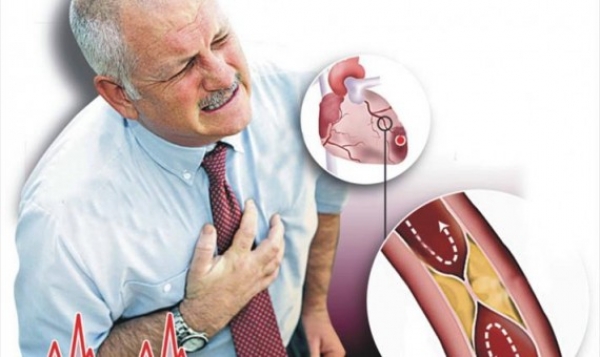Hanna Saadeh - Atrial Fibrillation
This abnormal heart rhythm also causes the left atrium to quiver instead of pump, allowing blood to pool in the left atrial cavity. When blood pools, it tends to clot, and the clots pass into the left ventricle. From the left ventricle, they are pumped out with the blood into the great arteries. When these clots reach the brain, they cause sudden strokes.
Strokes caused by tiny clots are quickly cleared by the body’s anti-clotting defenses, leaving the brain undamaged. These strokes are called transient ischemic attacks or TIAs. Typically the victim experiences weakness on one side of the body or trouble talking and then promptly recovers. Such transient ischemic attacks are warning signs because they are often followed by major strokes.
Strokes caused by bigger clots can cause significant brain damage, which may not improve with time. These dreaded strokes might leave the patient paralyzed on one side and unable to talk or swallow or attend to personal needs.
Atrial fibrillation is only one of the many causes of strokes, but it is an important cause because it is treatable. The treatment involves two strategies: a) the normal heart rhythm can be restored with medications, electric shock, or by ablating the abnormal nerves through heart catheterization; b) the rapid heartbeats can be slowed down with medications to relieve the heart strain caused by the ultra rapid rate. Treating the irregular heartbeats is called rhythm control, slowing the heartbeats is called rate control, and depending on the situation, the cardiologist may favor one treatment over another.
Another essential treatment entails thinning the blood to prevent clots from forming. To achieve that, special anti-clotting medications are used and this process is known as anticoagulation, which is a life long treatment for most atrial fibrillation patients. Aspirin, which is also a blood thinner, is not as good at preventing clots.
There are other causes of strokes such as defective heart valves, defective brain arteries, high blood pressure, high cholesterol, blocked carotid arteries, etc. Hence, when a patient has a stroke, the common causes of strokes are thoroughly investigated and appropriately addressed. Problems arise, however, when a cause cannot be discovered. Strokes, which have no discernable cause, are called cryptogenic strokes and represent 20% to 40% of all strokes. Such cryptogenic strokes present a clinical dilemma because, unless a cause is ultimately discovered, further strokes cannot be prevented.
To investigate this dilemma, two groups of researchers (New England Journal of Medicine, June 26, 2014) studied patients with cryptogenic strokes using advanced heart monitoring technologies. The aim of their studies was to see if patients with cryptogenic strokes have transient episodes of atrial fibrillation, which could be the reason why blood clots had travelled to their brains.
In one study, which monitored heart rhythm for 30 days in 280 patients with cryptogenic strokes, 45 (16%) had episodes of atrial fibrillation. In another study, which monitored heart rhythm for three years, 8.9% had episodes of atrial fibrillation in the first six months, 12.4% had episodes in the first 12 months, and 30% had episodes by the end of three years. Patients who were diagnosed with episodic atrial fibrillation, and who had their blood thinned with anticoagulants, suffered fewer strokes over time.
The commonly known cardiovascular risk factors that predispose individuals to develop atrial fibrillation are similar to those that predispose individuals to have strokes. Besides high blood pressure, high cholesterol, diabetes, obesity, smoking, heart failure and older age - high thyroid is one important, additional factor. Another less known, less obvious, but more common factor is the elusive syndrome of obstructive sleep apnea.
Obstructive sleep apnea, which is caused by narrowing and collapse of our upper airways during sleep, chokes our breathing at night and leaves us tired and sleepy the next day. It is a highly under-diagnosed condition, which occurs in 17% of adults, increases with obesity and age, and gets worse with time. It occurs in up to 50% of patients with diabetes or hypertension, and in 30%-40% of patients with coronary artery disease (Cleveland Clinic Journal of Medicine, August, 2014).
Patients with sleep apnea are at a much higher risk for heart rhythm disturbances, including atrial fibrillation. Moreover, patients whose atrial fibrillation was electrically converted had a much higher rate of relapse when their sleep apnea was not also treated, and their rate of relapse was proportional to the lower levels of oxygen they dropped down to during sleep. Also, patients treated for sleep apnea had a significant decline in cardiac rhythm disturbances and cardiac events, whereas those untreated had three times more cardiac events plus an increased risk of sudden death during sleep. Hence, patients with cryptogenic strokes or with atrial fibrillation should be screened for obstructive sleep apnea because treatment of this elusive condition has been shown to improve clinical outcomes.








Leave A Comment